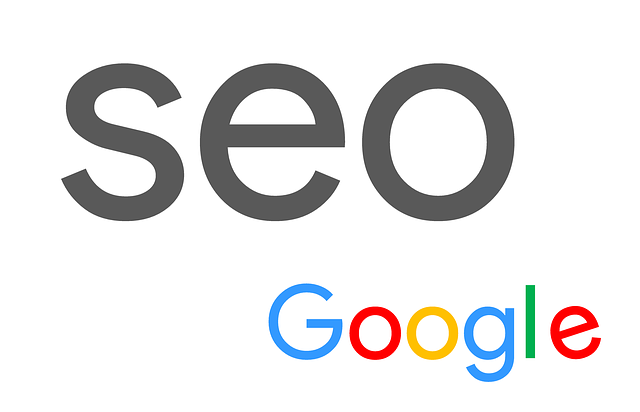Page speed is a powerful SEO Tip for Ranking Higher, as it directly impacts user experience and search engine algorithms. Optimizing factors like server response time, asset optimization, HTML/CSS/JS structure, and using CDNs can significantly reduce web page loading times. This leads to lower bounce rates, longer sessions, and higher credibility with search engines, ultimately boosting your website's rankings. Leverage tools like Google PageSpeed Insights for analysis, ensure mobile-friendliness, and implement best practices (image compression, caching, lazy loading) to enhance user satisfaction and SEO performance.
In the fast-paced digital landscape, fast page loading is not just a user experience preference but a crucial SEO tip for ranking higher. A slow website can significantly hinder your search engine optimization efforts by increasing bounce rates and reducing engagement. This article delves into the impact of page speed on SEO, explores key factors affecting web page loading time, provides actionable SEO tips for ranking higher through optimization strategies, and introduces tools to measure and analyze website speed, culminating in a discussion on the role of mobile-friendliness in achieving swift page loads.
Understanding the Impact of Page Speed on SEO

Page speed is an often-overlooked yet powerful factor in the ever-evolving landscape of search engine optimization (SEO). In today’s digital era, where folks are accustomed to instant gratification, even a slight delay in page loading can significantly impact user experience and drive them away from your site. Search engines, notably Google, have explicitly stated that page speed is a crucial ranking factor, which means optimizing for faster loading times can directly translate into SEO tips for ranking higher.
A slow-loading website can lead to increased bounce rates and reduced time on page, signaling to search engines that the content may not be relevant or valuable. Conversely, fast-loading pages encourage users to explore more, resulting in lower bounce rates and longer sessions. This user behavior data serves as a vital signal for search algorithms, indicating that your site provides a positive experience, thereby enhancing its credibility and authority—all essential components of SEO strategies aimed at climbing the rankings.
Key Factors Affecting Web Page Loading Time

Several key factors significantly affect web page loading time, which is a crucial aspect of enhancing user experience and boosting your SEO efforts. One of the primary influences is server response time—how quickly your web server responds to user requests. Optimizing server performance through efficient coding practices, content delivery networks (CDNs), and scalable infrastructure can drastically reduce this time.
Another critical factor is page size and asset optimization. Smaller file sizes for images, videos, and scripts lead to faster loading times. Compressing media assets, leveraging browser caching, and minifying code and CSS all contribute to quicker page loads. Additionally, efficient use of HTML, CSS, and JavaScript structures can minimize the overall complexity of your webpage, making it load more swiftly. Implementing these SEO tips for ranking higher involves a combination of technical optimizations and strategic content management aimed at reducing web page loading times.
Optimizing Your Website for Faster Loading

Optimizing your website for faster loading is a crucial SEO Tip for Ranking Higher. Search engines, particularly Google, prioritize sites that offer quick and seamless user experiences. One of the key factors they consider is page load speed. Implementing strategies like compressing images, leveraging browser caching, and minimizing HTTP requests can significantly reduce load times. These techniques ensure your website not only performs well but also keeps visitors engaged, leading to lower bounce rates and longer sessions—all positive signals for search engines.
Additionally, using content delivery networks (CDNs) distributes your site’s content across multiple servers, reducing latency and enhancing page speed globally. Optimizing mobile loading is also vital since a growing number of users access the internet via smartphones. Mobile-friendly design and efficient coding practices ensure your website adapts quickly to different screen sizes, providing fast and consistent performance across devices. These SEO Tips for Ranking Higher not only boost your site’s visibility but also enhance user satisfaction, driving better search engine rankings over time.
Best Practices for Improving Page Speed Performance

Improving page speed is a key component in enhancing user experience and, consequently, boosting your SEO strategy. A fast-loading website keeps visitors engaged, reducing bounce rates and encouraging them to explore more pages, which signals to search engines that your site offers valuable content. This, in turn, can lead to higher rankings for your desired keywords.
To achieve this, implement best practices such as optimizing images by compressing them without sacrificing quality, leveraging browser caching to reduce load times, and minimizing HTTP requests. Additionally, ensure your code is efficient and well-structured, utilizing tools like minification and lazy loading for resources that appear below the fold. These strategies collectively contribute to a faster page loading time, ultimately helping you secure better search engine rankings and improve overall user satisfaction.
Tools to Measure and Analyze Website Speed

Understanding your website’s performance is a key step in implementing effective SEO tips for ranking higher. To measure and analyze website speed, several powerful tools are at your disposal. Google PageSpeed Insights stands out as a popular choice, offering detailed insights into both mobile and desktop performance. This tool provides a score out of 100, identifying areas where improvements can be made to enhance user experience and search engine rankings.
Beyond Google’s offerings, other reliable options include GTmetrix and Pingdom. These tools provide comprehensive reports on page load times, broken links, and more, helping you identify bottlenecks hindering your site’s performance. By leveraging these resources, you can gain a clear understanding of your website’s current state, making informed decisions to streamline speed and boost SEO effectiveness.
The Role of Mobile-Friendliness in Fast Page Loading

In today’s digital era, mobile-friendliness is a critical aspect of fast page loading and an essential SEO tip for ranking higher. With a vast majority of internet users accessing websites through their smartphones and tablets, search engines prioritize sites optimized for mobile devices. Google, for instance, has made it clear that mobile usability is a significant factor in its ranking algorithms. A website that loads quickly on mobile devices not only enhances user experience but also signals to search engines that the site is efficient and reliable. This, in turn, can lead to improved search rankings and higher visibility.
Ensuring your website is mobile-friendly involves several simple yet effective steps. These include optimizing images for faster loading times, minimizing HTML, CSS, and JavaScript code, using responsive design to adapt to different screen sizes, and implementing a clean navigation structure. By addressing these aspects, you can significantly reduce page load times on mobile devices, making your website more appealing to both users and search engines alike.
